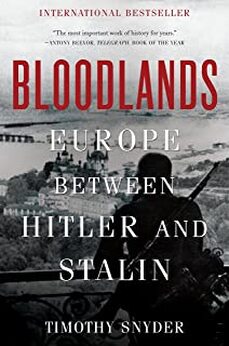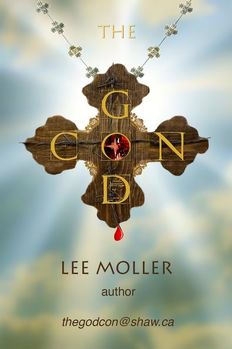 This book is a long read about a difficult subject - human suffering on an unprecedented scale. The obvious first question is "What are the Bloodlands"? The Bloodlands refers to the dirt between Germany and Russia during the early 20th century. I say dirt rather than listing countries because borders change and definitions are loose. In today's terms it covers Latvia, Lithuania, Estonia, Belarus, the eastern two thirds of Poland, the western borders of Russia, and Ukraine. After the war ended, the iron curtain came down and the nature of the crimes committed in these areas were covered up. Only now that 75 years have passed has more information come available. For example, the liberating western allies never once saw a death camp. They saw the ends of several labor camps, and grisly as those images were, they were but a shadow of the crimes committed in the Poland death camps (they were all in Poland which became a Soviet puppet state). Another example: the truth is finally out about death sites like Baba Yar and Katyn. Katyn was a Soviet slaughter of Polish officers which they tried to blame the Germans for. "During the years that both Stalin and Hitler were in power, more people were killed in Ukraine than anywhere else in the Bloodlands, or in Europe, or in the world." Think about that statement. We know Poland suffered greatly, due in part to being between a rock (Germany) and a hard place (the USSR), as did Belarus. It is worth noting that countries such as Canada (young, one border, surrounded by oceans) did not exist in Europe. Europe has regions that have certain ethnic characters, and the map of Europe has changed many times prior to the end of WWII. Poland, for example, had the largest number of Jews in Europe as well as large populations of Germans, Ukrainians, and Belarusians. Chapter 1 deals with the Soviet famines. Starting in 1930, Stalin began "collectivizing" Ukraine farms. Kulaks (well off peasants) were killed. Farms became state property. And the state demanded ever increasing quotas of grain resulting in famine and starvation by the millions. The phrase "roving bands of cannibals" says much about the conditions. Stalin's wife committed suicide the day after the 15th anniversary of the October Revolution. She was clearly making a point. Young communists were told starving people were the enemy who "risked their lives to spoil our optimism". 3.3 million dead in Ukraine. Chapter 2 is "Class Terror", basically blaming other people for the USSR's failings. If it wasn't a satellite state ruining things, it was foreign powers. It deals with the internal and external politics of both Hitler and Stalin from 1933 to 1937. National Terror, Chapter 3, deals with purges. Poland shares a long border with Ukraine. In the late 30s, the most persecuted group in Europe were not the Jews, but the Poles. The definition of an "enemy" was so broad in the USSR that it could apply to anyone (it included as crimes certain "forbidden thoughts and ideas", and trivia like owning a rosary). Stalin's Great Terror purged the upper ranks of his officers and again fell on the Kulaks. . Torture was common place and often public. A million were killed. Many blamed the Jews for this. Later, when Germany and the USSR split Poland, the terror started there too. Chapter 4: The Molotov - Ribbentrop line partitioned Poland. Poland was a haven for Jews and had the largest concentration in Europe. Germany got about 2 million Polish Jews and immediately began planning how to get rid of them. In about a year or so, eliminating Jews from Europe would become Nazi policy. The big players: Hans Frank (governor of Poland, and Hitler's one-time lawyer) , Himmler, Reinhard Heydrich (perhaps the evilest man in modern history) and Adolph Eichmann. Heydrich created the first Einsatzgruppen (special killing squads). Between 1940 and 1941, the two conquerors killed 200,000 Poles and deported a million more to gulags or concentration camps. Chapter 5 deals with economics. Germany has attacked the USSR. The Germans had a Hunger Plan… feed the soldiers, starve the locals. The Russian war did not go as Germany planned. The Einsatzgruppen were released in earnest in Poland, Belarus and Ukraine (among others). Vast numbers of Soviet troops were captured and treated far worse than any other POWs in Europe. Only about 50% would survive. No names were taken, unusual even in those times. "As many Soviet POWs died on a single given day in Autumn 1941 as did British and American POWS over the course of the entire second world war." The invasion of the USSR was supposed to solve Germany's economic problems. The opposite happened. The Final Solution (Chapter 6). Himmler get s control of the eastern conquered territories. By now Communists and Communism were viewed a Jewish plot, so killing Soviets and killing Jews were justified in the same breath. When food was short, the emphasis for the Germans was to kill Jews (useless eaters). When labor was short, the emphasis was to kill those unable to work, and deport those who could to now-depleted German factories. This had the odd result of making Germany the country with the largest percentage of Jews and Slavs in Europe (other than their home countries). Atrocities were everywhere. Baba Yar and Katyn are two examples. Holocaust and Revenge: Belarus was ground zero for Germany vs. USSR. Moscow was never taken, but Minsk was burned to the ground. A fantasy that is promoted to this day is that the Russians suffered more than any other group in WWII. This is false. In terms of territory, Germany barely penetrated Russia. Not so for the states in between. Jews in Belarus feared Soviet pogroms, but feared the Germans more. Poles hated them both but could see the future: If they defeat the Germans, they get Russian rule. The devil you know…? Many fled Minsk to the forests where Jews and others carried out sabotage. The movie Defiance w/Daniel Craig captured the internal conflicts quite well . By war's end, half the population of Belarus was either dead or moved. No other country was treated worse. The Death Factories: I wont go into a lot of detail here. From the killing squads, body burning, baby shooting, and gas vans to factories of death. This is the most grisly chapter in human history. Six death camps did the dirty work: Chelmo, Belzec, Sobibor, Treblinka, Madjanek and Auschwitz. They were all in Poland, and the Western Allies never set foot in one. The horrible familiar images from the Nuremburg trials were all Americans visiting labor camps that had been recently abandoned. Women, with more fatty tissue, burned better than men, and so workers would put them on the bottom of the pyres. Chew on that for a moment. Resistance and Incineration recalls the closing days year of the war. The treatment of Poland and Warsaw are discussed at length. I have reviewed a book on this subject matter already. Ethnic Cleansings: Although Poland "won" the war, it lost 47% of its territory and became a Soviet satellite state. As the war ended, Stalin went on another rampage. He wanted pure states with pure goals, which he would create come what may. The closing chapters sum up the book.
Final Thoughts I have read a lot about WWII. I am never surprised, but always shocked, when I read the details of human suffering at the hands of the Germans and the Soviets. One can get almost anyone to do unspeakable violence if they can be convinced that they are the victims. This is a long book, but I never got bored. It has helped put the eastern part of the war in better perspective.
1 Comment
|
AuthorLee Moller is a life-long skeptic and atheist and the author of The God Con. Archives
May 2024
Categories
All
|

 RSS Feed
RSS Feed